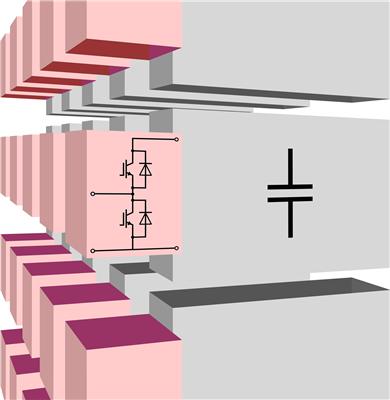High-voltage direct-current transmission (HVDCT) could be made more achievable using low-cost semiconductor cells, the focus of research at Fraunhofer Institute for Integrated Systems and Device Technology IISB in Erlangen.
“At each end of a HVDCT system there is a converter station,” says Dipl.-Ing. Markus Billmann. “For the converters we use interruptible devices which can be operated at higher switching frequencies, resulting in smaller systems that are easier to control.”
A major challenge is to protect the cells from damage. Each converter station will contain about 5,000 modules, connected in series, and if more than a few of them failed at the same time and affected their neighboring modules a chain reaction could be triggered which would destroy the entire station.

High-voltage direct-current transmission (HVDCT) modules. Credit: Fraunhofer
“We have now solved this problem. With our cooperation partners we are working on tailor-made materials and components so that in future the equipment will need less energy,” says Billmann.
Once enabled, the transport and power networks will grow together as a result of the new electromobility, so that electric vehicles will not only tank up on electricity but will also make their batteries available to the power grid as storage devices. Renewable energy sources will become available on a wider scale, with individual households also contributing electricity they have generated.
The first test could be a project like Desertec, which is a set of solar thermal power plants in North Africa and the Middle East which will produce electricity for Europe.
“In cooperation with Siemens Energy we are developing high-power switches. These are necessary for transmitting the direct voltage in the power grid and are crucial for projects like Desertec. The switches have to be more reliable, more scaleable and more versatile than previous solutions in order to meet the requirements of future energy supply networks,” says Billmann.






Comments